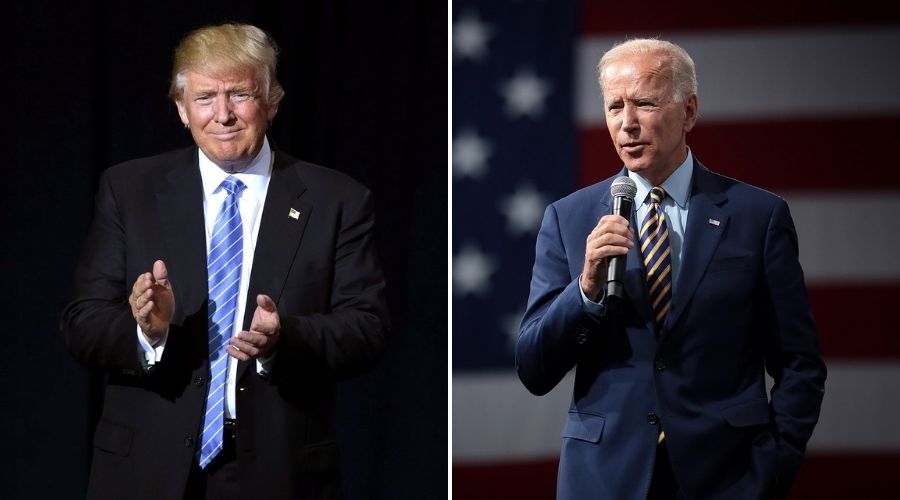
According to Ed Crooks, Wood Mac’s vice chair for the Americas, Biden’s proposal would entail one of the most radical infrastructure overhauls in US history, particularly the aspect related to creating a carbon-free electricity system by 2035.
While Trump rejects the idea of cutting greenhouse gas emissions, Biden promises to launch a “clean energy revolution”
“The plan creates enormous opportunities: it could mean a seven-fold expansion of US onshore wind and utility-scale solar generation capacity, coupled with steep growth in offshore wind and battery storage,” Crooks writes in the report. “It would lead to the emergence of a new generation of energy majors, with total investments in new renewable energy generation and storage of over $2.2 trillion.”
The positive sides of the proposal, however, don’t cancel out its pitfalls.
“Grid reliability will weaken under high renewables penetration unless market reforms incentivize the deployment of enough carbon-free balancing power,” the analyst’s document states. “‘Made in America’ requirements will be very difficult to meet. Demand for solar modules could exceed 100 GW a year, but US-based solar module manufacturing capacity is only about 4.7 GW a year in 2020.”
If Trump were to be reelected, clean energy is also expected to continue growing but at a slower pace. In this case, the growth wouldn’t be pushed by federal policies but by decisions by the private sector and state governments.
Despite his promises, under Trump, coal-fired power plants are also expected to continue to disappear.
“If Trump secures a second term, the US power sector is likely to continue along the path it has followed in his first. Although he campaigned on a pledge to “bring back coal”, and his administration has taken actions to support the coal industry, unfavourable economics and state policies have meant it has continued to decline, with output dropping 30% during his time in office,” the report reads.
When it comes to the costs of pollution, a second Trump term would not see major changes from current policies. A Biden administration, on the other hand, could seek to institute a carbon tax whose impacts could be more intense than those of his proposed 28% rise in corporate income tax.
Such effects, however, are expected to vary widely between different assets and depending on the tax’s design and rate.
In Crook’s view, while the deepwater Gulf of Mexico and the Permian Basin are to remain competitive, the reserves in the Gulf Coast and the Rocky Mountain regions may become stranded.
Gas-powered vs. electric vehicles
When it comes to gasoline demand, a new Trump government would continue to ease fuel economy standards. WoodMac believes that this trend, paired with the administration’s legal challenge to California’s autonomy to set its own more stringent rules, could provide some small upside for US gasoline demand.
The market analyst forecasts the US gasoline fleet fuel economy to increase from 21.2 miles per gallon in 2019 to 28 mpg in 2040.
Under Biden, this projection is not likely to change much as studies have shown that the efficiency of the US light vehicle fleet is driven more by consumer preferences and technological progress than by regulation.
Tighter fuel economy standards introduced by a Biden administration could cut just 150,000 barrels a day — about 2% — from US gasoline demand in 2030
“Biden has said he wants new fuel economy standards to ensure that ‘100% of new sales for light- and medium-duty vehicles will be zero emissions,’ but he has not set a date for achieving that goal, and for the rest of this decade at least, the vast majority of the cars sold in the US will continue to use gasoline,” the review states. “We estimate that tighter fuel economy standards introduced by a Biden administration could cut just 150,000 barrels a day — about 2% — from US gasoline demand in 2030. Most of that impact is a result of increased sales of EVs.”
WoodMac believes that more stringent fuel economy standards could raise the number of EVs on US roads to 4 million by 2030. Without any changes to the status quo, the expectation is that the next decade sees 2.3 million electric vehicles being driven across the US.
Yet, even if the first scenario plays out, EVs would still be only about 1.5% of the total of 275 million vehicles expected on US roads by then.
According to Crook, even Biden’s promise to install 500,000 charging outlets would make little difference as the analyst’s projection is that the country will have 800,000 new outlets by 2030.
“He has pledged to restore the full EV tax credit, which is currently capped by manufacturers’ sales and has already been cut for General Motors and Tesla,” the report states. “Restoring the full tax credit would give EV manufacturers some cushion in pricing and help with adoption in the near term.”




